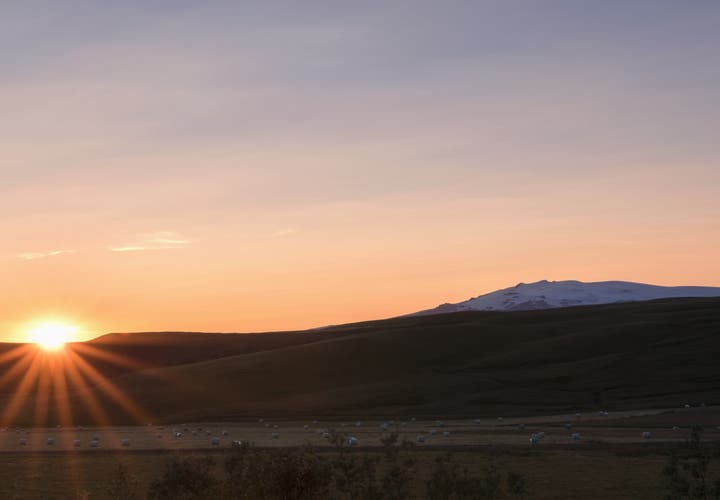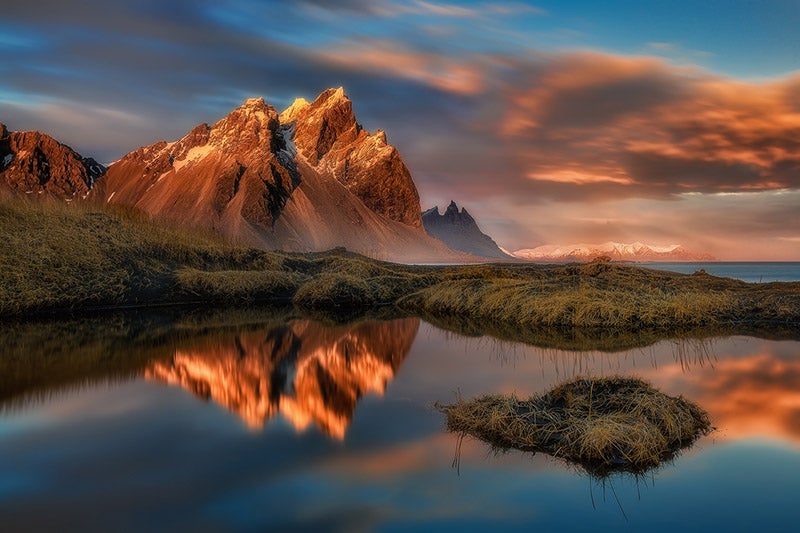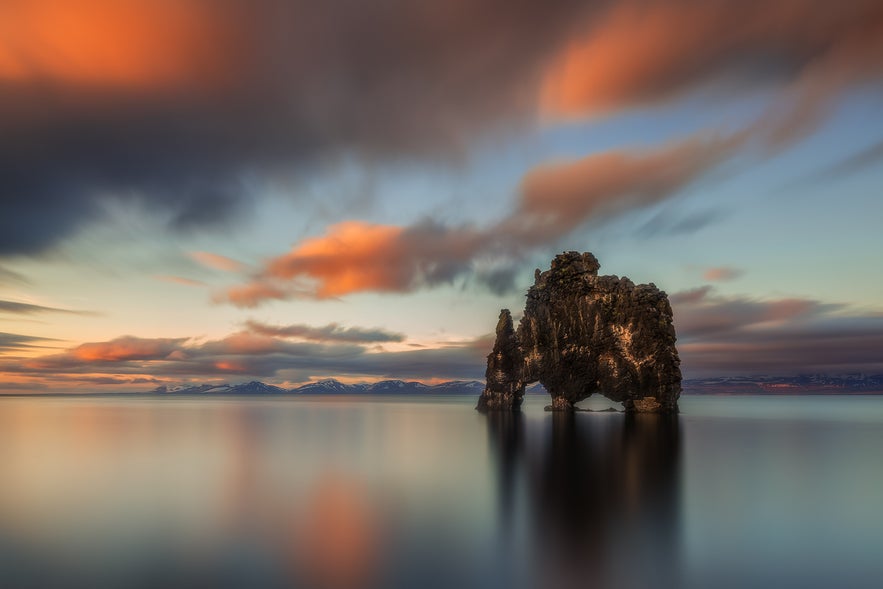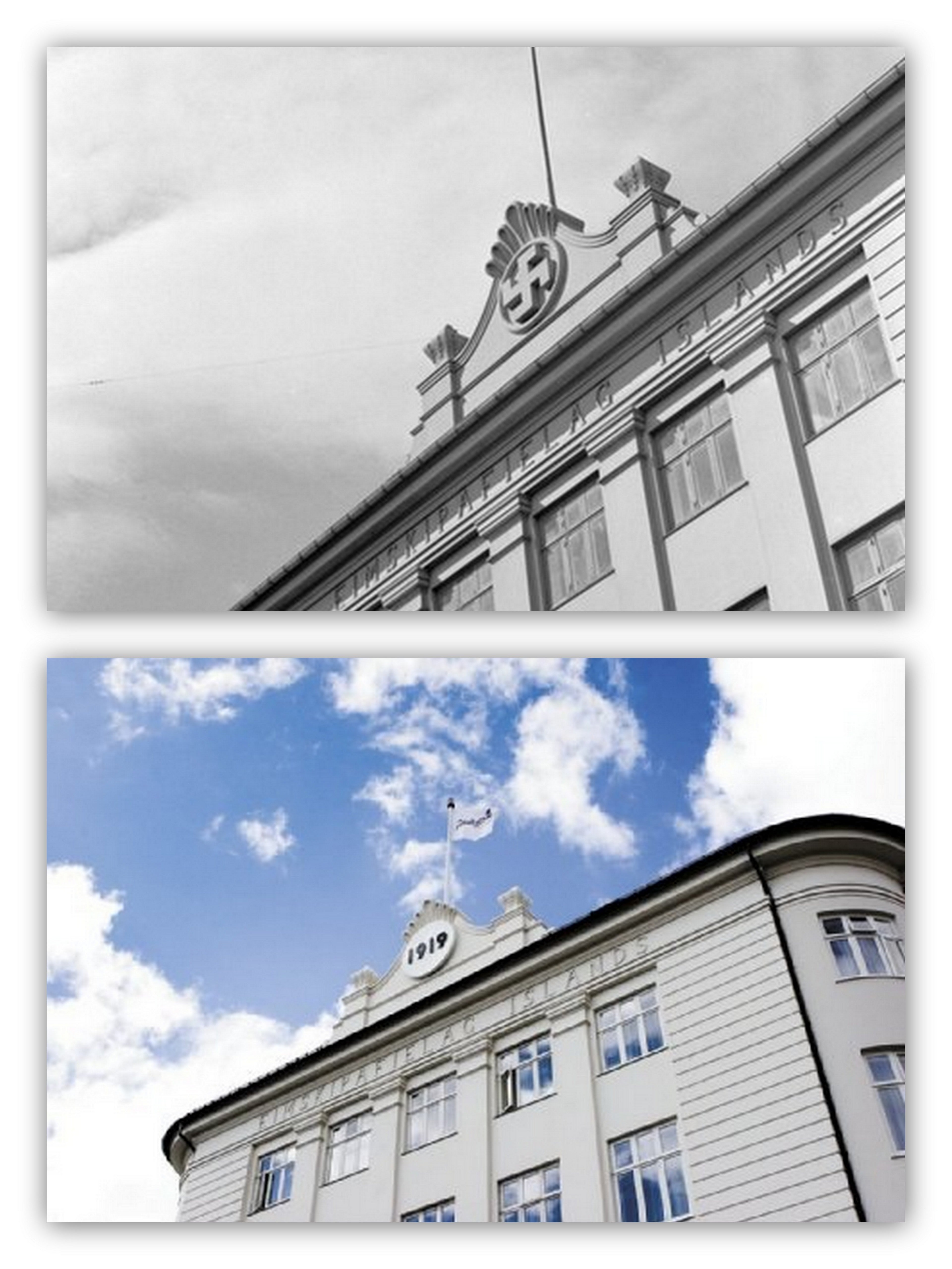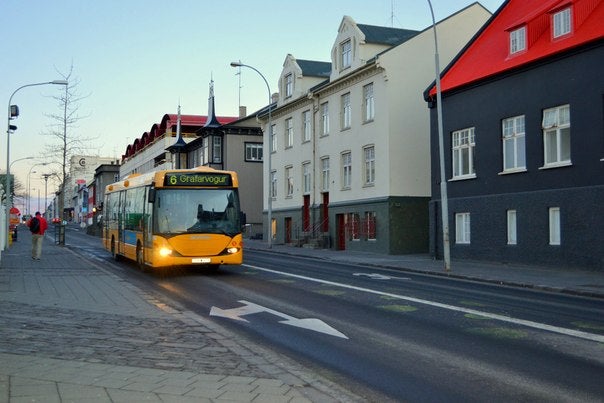The light conditions in Iceland change dramatically depending on what time of year it is. Being a photographer here you come to understand and learn how the daylight, or lack of, can be used to create the best photographs. I would like to share some of my knowledge from my own experience in the following post.
- Find Photo tours here
What is the Golden Hour?
During the time before just before the sun sets and before it rises in the morning, the world is often bathed in a warm, golden light. Photographers call this the Golden Hour. Many say that this is the best time to shoot landscape photography and it’s easy to see why.
The scenery is softly lit and there are often great pastel colours in the sky. You get longs shadows too for added drama and clouds can turn into dramatic streaks for red, pink and orange. Depending on where you are in the world, and the time of year, Golden Hour can last anywhere from around 30 minutes to over 7 hours! Being so far north, Iceland is exposed to some of the longest Golden Hours in the world, making it a perfect place for photographers.
- See Also: Photography in Iceland
In addition to Golden Hour, there is also Blue Hour. This is the time just after the sun has set or before it rises again, where, you guessed it, the light cast is blue in tone. This is also very popular with photographers, especially for things such as architectural photography and long exposure photography. Blue hour in most parts of the world typically lasts a matter of minutes, often resulting in a mad scramble to capture an image during that short window. In Iceland, it can last for hours.
The combination of stunning scenery and perfect light conditions is why Iceland is so popular with photographers.

Summer –Land of the Midnight Sun
During the summer months, it doesn't get fully dark in Iceland. This is because the sun only just dips below the horizon meaning that it remains quite bright, even in the middle of the night. This offers photographers the chance to take advantage of that wonderful golden light I just mentioned.
On the longest days, Golden Hour can last up to 7 hours! Below are screenshots from an iPhone app called "Golden Hour.” This is an essential tool for me as it tells me how long Golden and Blue Hours will last and also gives me an indication, on a scale of 1-10, of how good they’ll be, depending on the weather conditions.
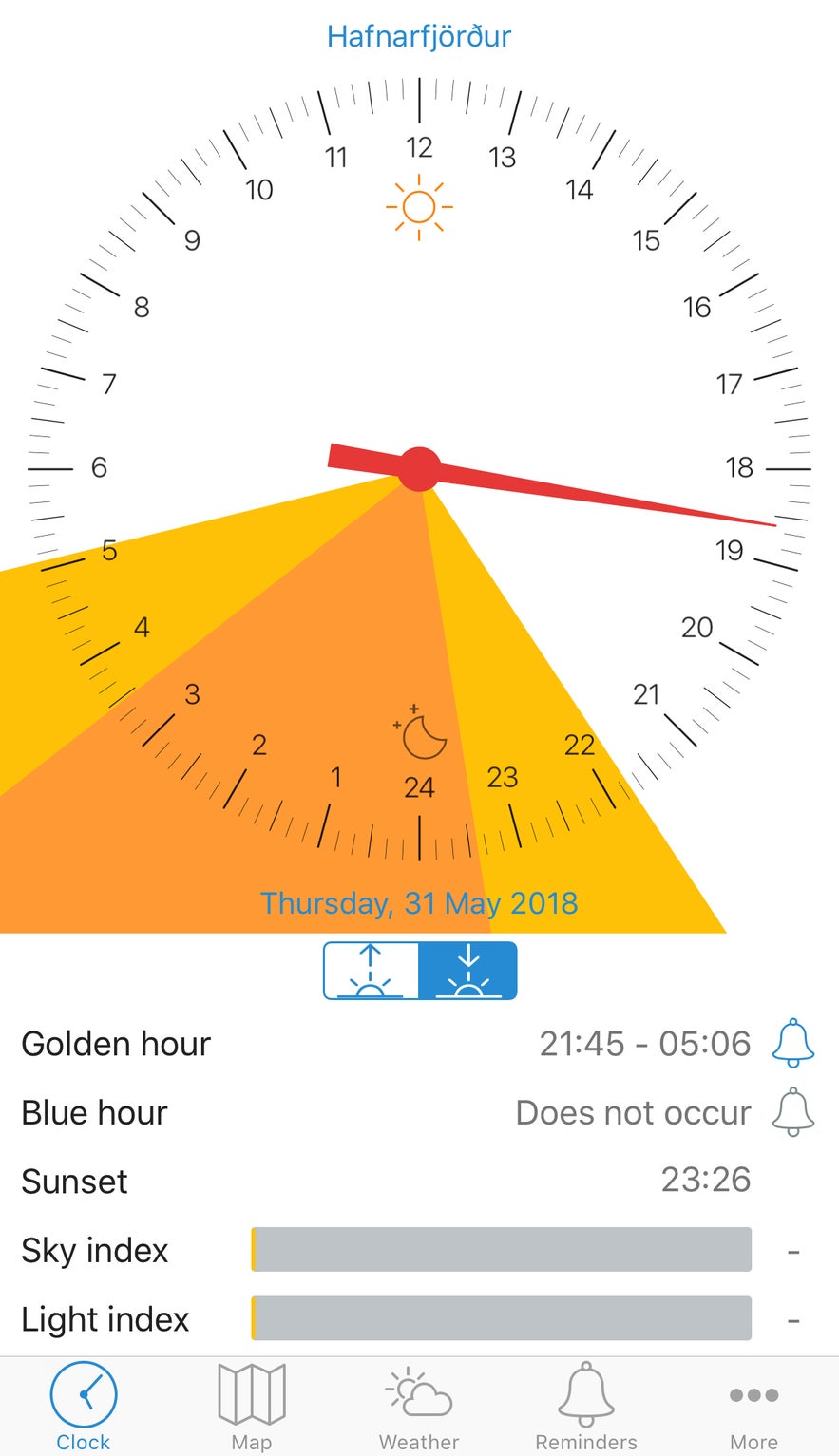
From May 20th until July 23rd each year the Golden and Blue Hours last almost all night.
Remember that mad scramble I mentioned photographers often have during the Blue Hour? Well, you won’t have to worry about that here as you have 3 hours of it to get the image! The soft warm light of Golden Hour can also feel almost endless.
See Also: Top 9 Things to Do in Iceland in Bad Weather
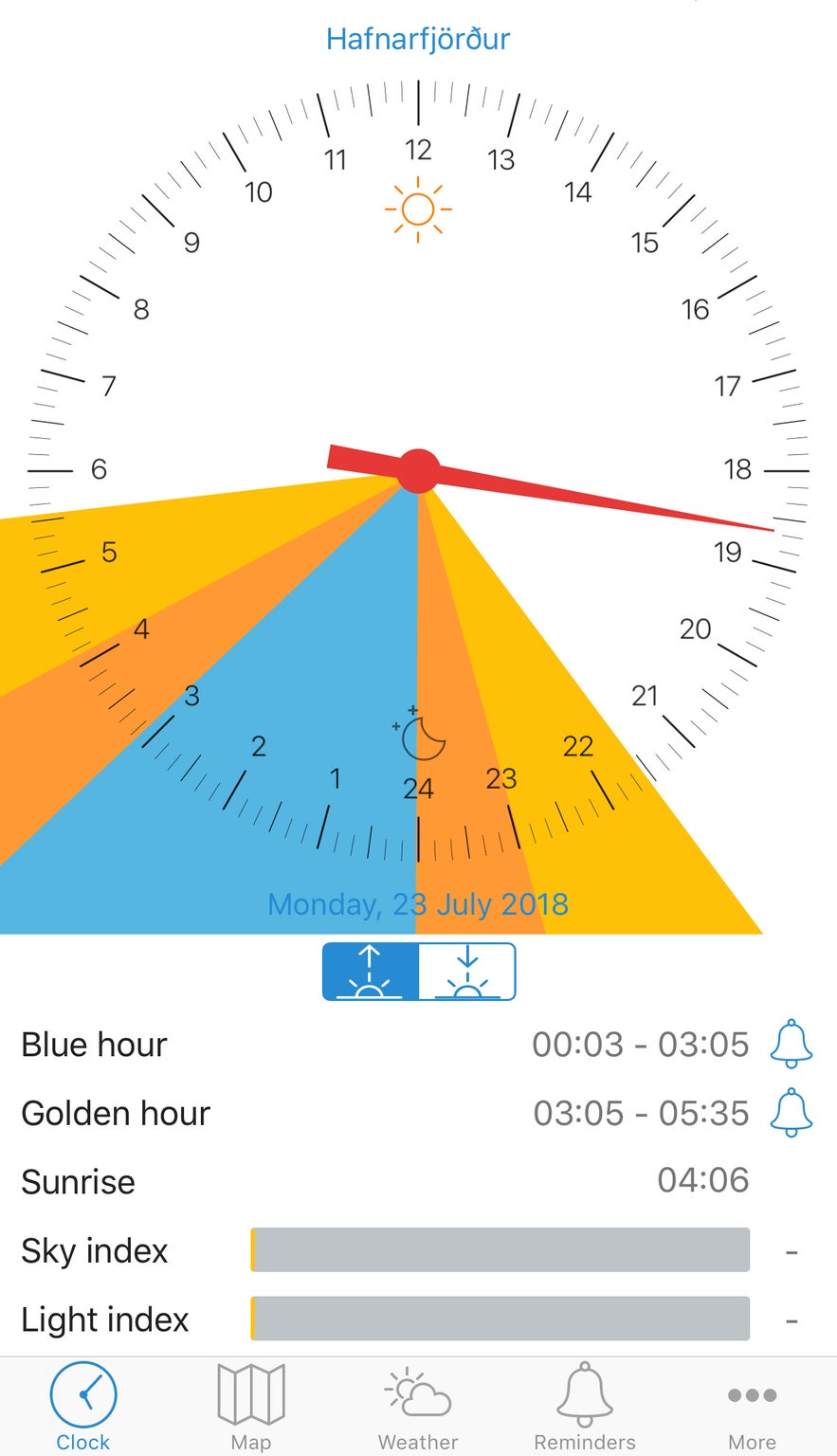
This may seem perfect, and it certainly can be, but it can present some challenges that are worth being aware of. Firstly, the light can be very good but can also come from a very specific direction. So if you want the light to hit a subject in a certain way (e.g. a volcano or glacier) you will need to plan for this beforehand. I use the Photographer's Ephemeris which has a fee web app and is available in a suite of apps on iPhone and Android. You can actually use the TPE 3D app, for example, to simulate the light falling on the landscape, which I have found to be incredibly helpful and accurate. By planning ahead you will be able to get the light hitting where you want it to. I highly recommend this app in particular.
During summer you should also remember that all this light can mean very long days and long nights if you want to make the most of conditions. Photographers coming here purely for photography purposes often change their sleeping cycles to sleeping during the day so they can stay up all night. This is not realistic for most people who are here on a holiday so if you do want to make the most of the golden light for your photography, make sure to plan for some very long days!
If you do decide to make the most of the long summer nights then you can visit places that are normally very busy during the day and find that you have the place almost to yourself during the night. This is becoming less common but it can still be possible to find yourself alone at even the most popular locations.
- Find Horse Riding Tours here
Another benefit of summer (this 2018 summer aside) is that the weather tends to be calmer and warmer meaning you can spend longer outside making the most of the amazing light conditions.
Winter –Even Better Light Conditions?
Where the days in summer are long, the opposite is true in winter. There are some days where it doesn't become fully light, with the sun only just peaking above the horizon on the shortest days.
These shorter days may put some people off visiting during the winter for photography but I have actually found there are some benefits to the winter light conditions which may actually make it my preferred time of year for photography.
From the Golden Hour app I have shared some screenshot of the winter Golden and Blue Hour information pages:
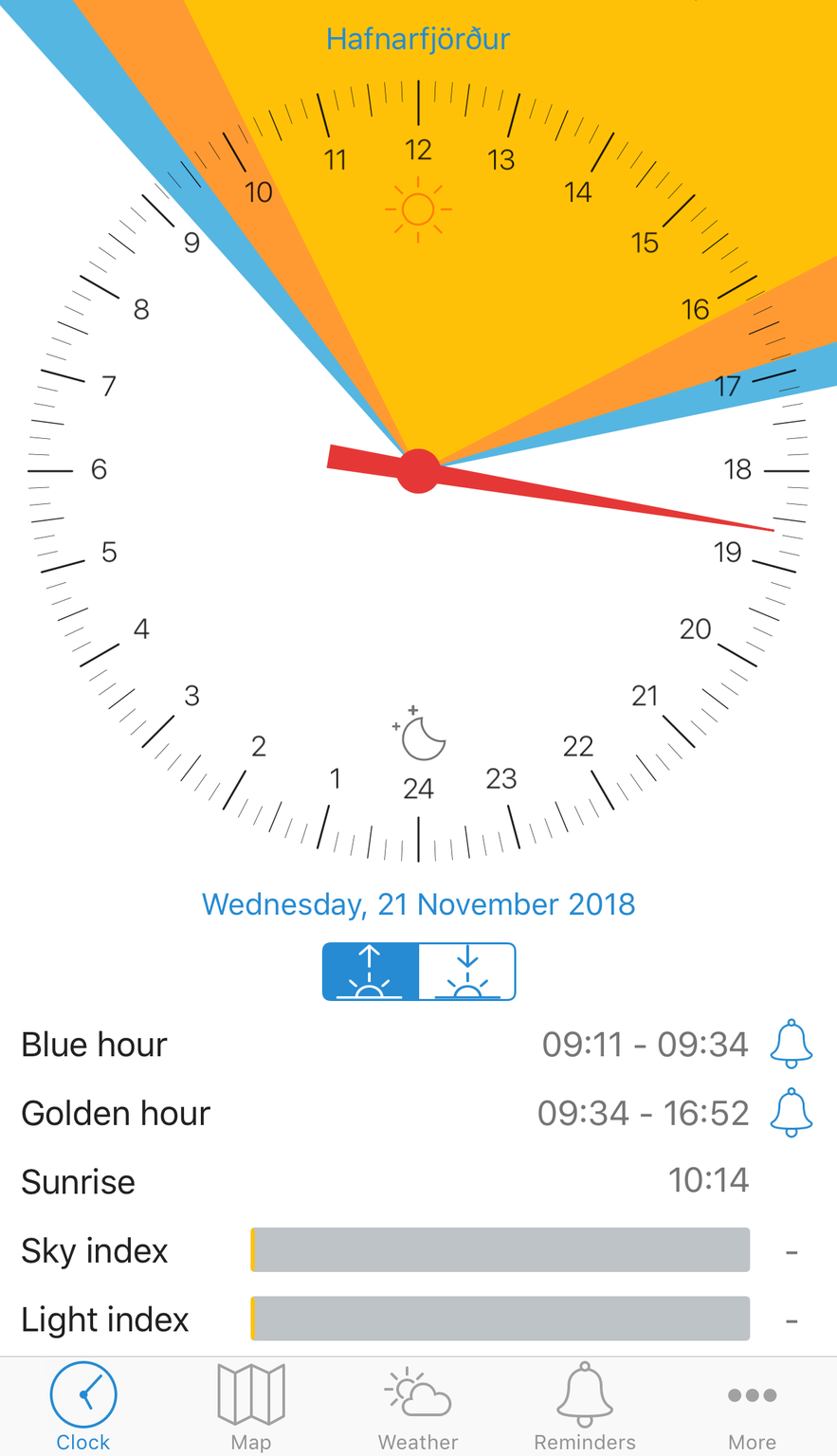
For two full months in winter, we actually have Golden Hours that last sometimes for over 7 hours during the day! A big benefit of this is that there are no early morning alarm calls or late nights required. You can get up at your leisure, have a late breakfast, capture sunrise for a few hours followed immediately by hours of sunset photography before you make your way back in time for a nice dinner somewhere. You can even have a glass of wine as you won’t need to get up early the next day!
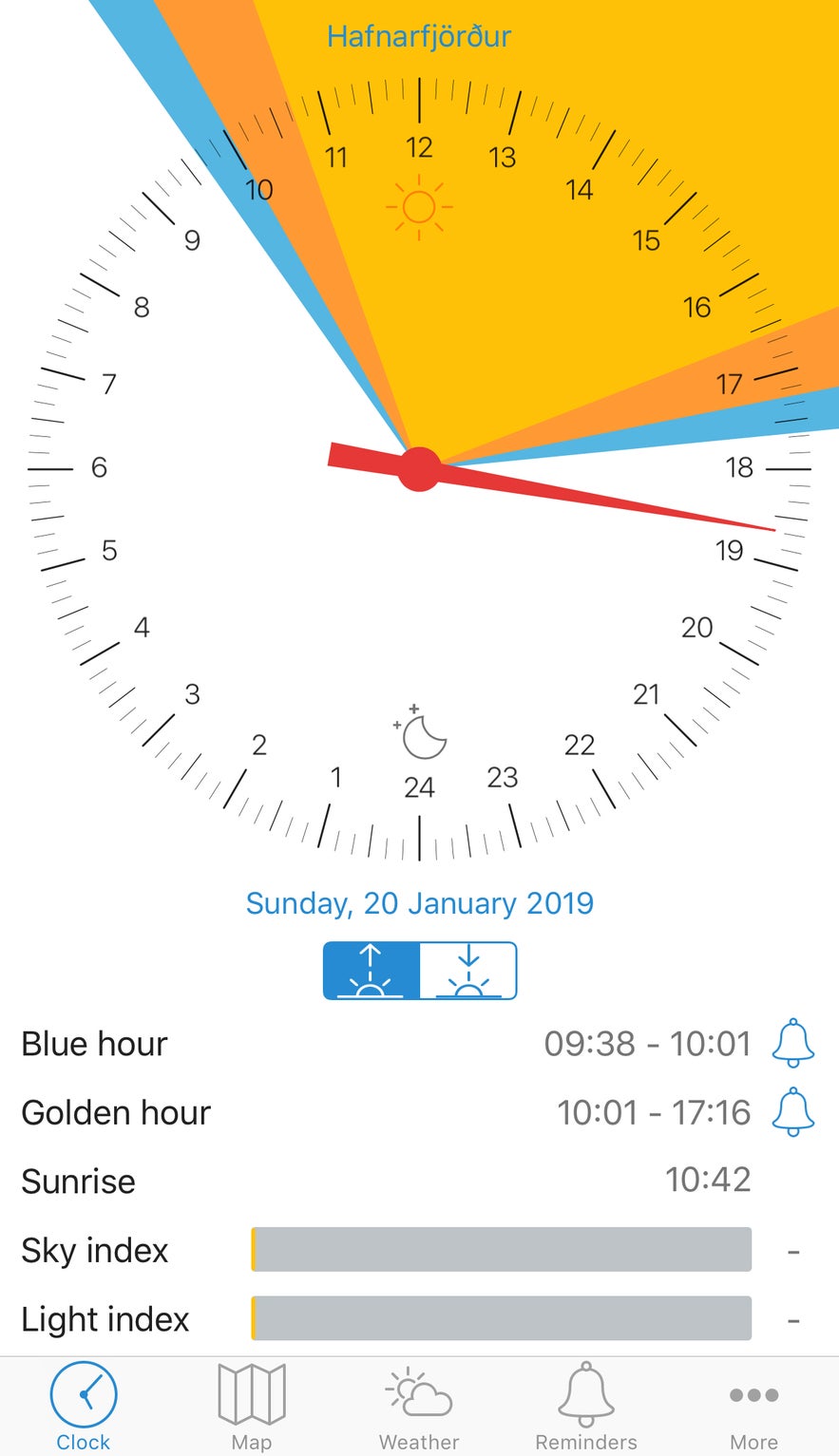
Compared to summer, the light is quite different. The cold winter air has an effect and the tones during sunrise and sunset tend to be very muted, soft and pastel in colour. Combined with wintry scenes you can get some wonderful landscape images using this light, as you can see from these images.
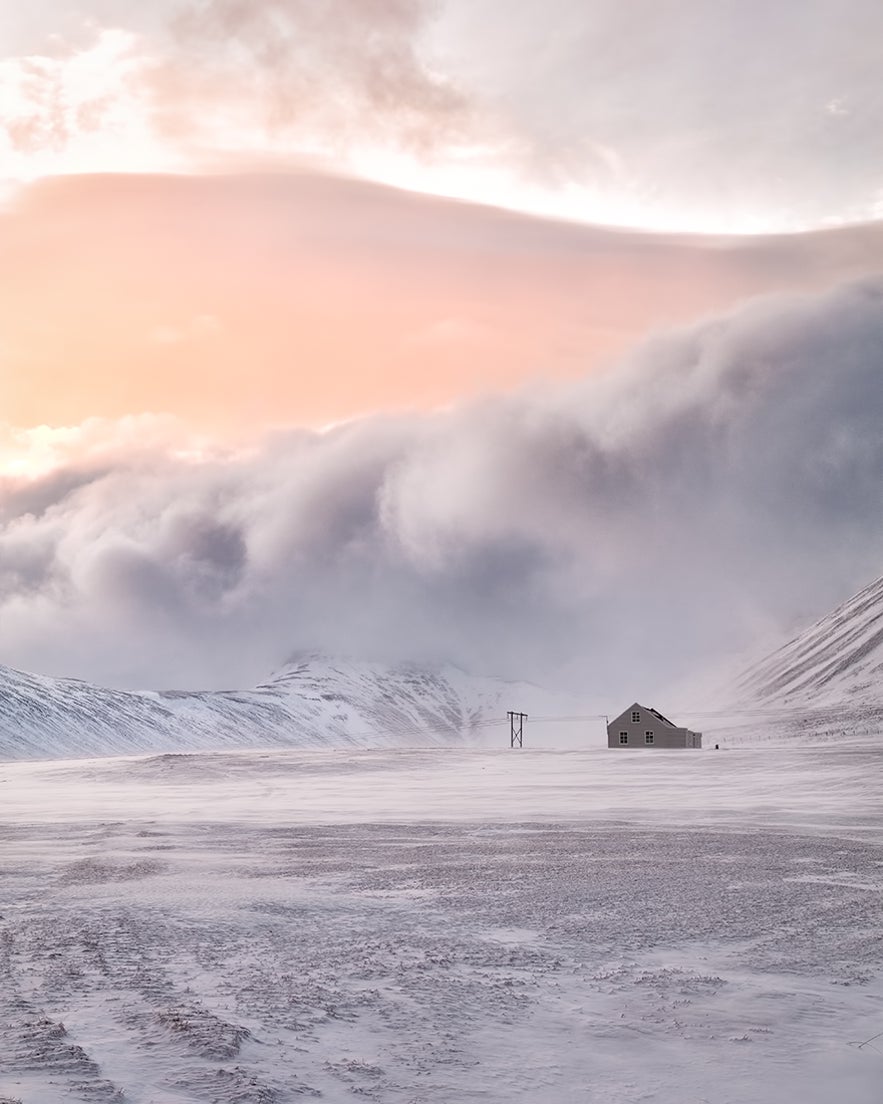
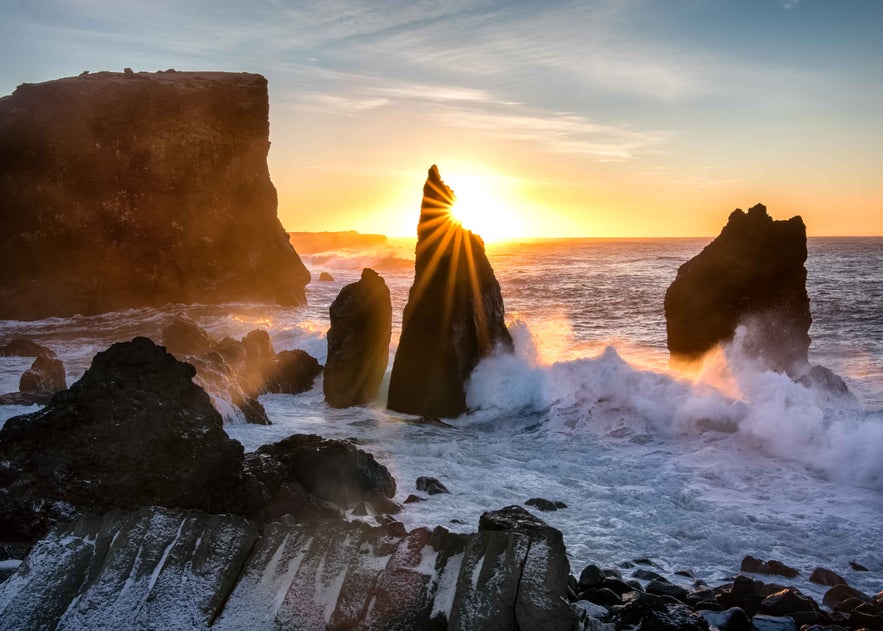
Last year on a very cold day, December 10th, I left my house at around 9AM, drove for around an hour to the area I wanted to photograph, prepared for the sunrise at around 11:45AM and spent the next 4 hours making the most of the Golden Hour light. On the way home I captured the sun setting and was still home in time for dinner!
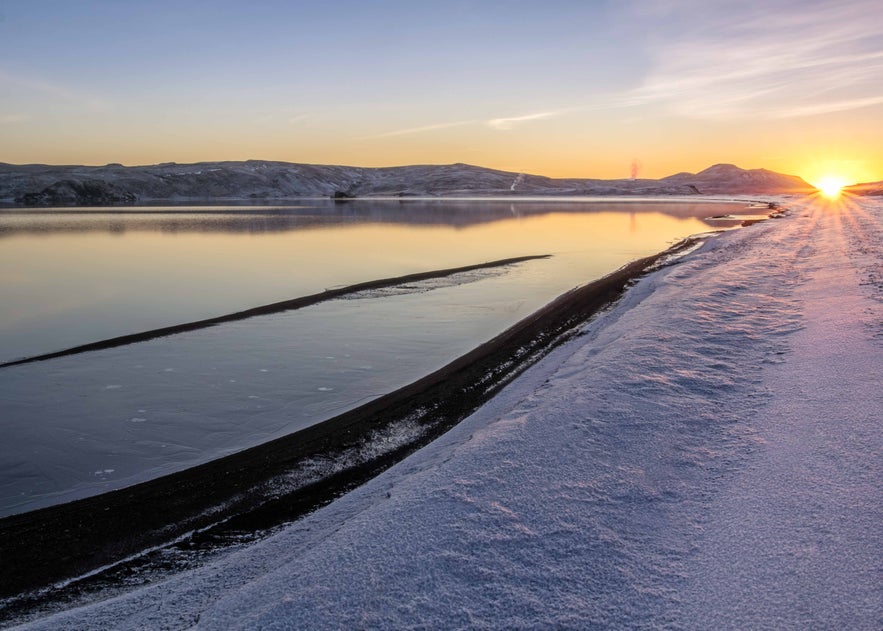
I find that these shorter winter days lend themselves well to productive photography. They are short enough that you avoid fatigue meaning you stay fresh to capture those images. The cold air helps with this too! The light conditions tend to remain constant during the day so you are rarely chasing the light. If you are a photographer who likes to take their time then this is a great time to visit.
- See Also: Weather in Iceland & Best Time to Visit
It is worth noting some of the challenges that winter brings and unsurprisingly the main one relates to the unpredictable weather. There were stretches of up to 2 weeks during the last winter when conditions were too poor to venture out for any travel, let alone photography. This can impact people who are visiting here for a limited time but please do respect the conditions and don’t try to go out if the weather is bad. People really can get into serious difficulties doing this, requiring rescue. It is not like you are going to get any good images anyway! Use the time to hunker down with a good book and watch the wild weather from the comfort of wherever you may be staying.
Secondly, even though the days are short, you will feel like you have been out for an eternity on some of them. It can be bitingly cold with changeable conditions leaving you feeling quite exhausted! For the first winter image above I was out all day in gale force winds with a windchill of -20°C. The driving conditions were extremely challenging and I was certainly tired by the end of it! I had hoped to capture the famous Kirkjufell on this day but I couldn't stand in the wind, let alone get a stable image of the waterfall. I settled for an iPhone image taken whilst laying on my front in deep snow, my phone steadied on a rock.

The lower winter sun can also provide challenges if you want subjects to be lit well. Even the smallest ridge, tree or mountain can block the light. Make sure to use something like the Photographer's Ephemeris again to avoid this. On the plus side, the low sun creates some gorgeous shadows and reflected light conditions, especially on snow.
- See Also: Midnight Sun in Iceland
What about the Northern Lights I hear you ask? Well this isn’t really a post about them as they are worthy of their own blog. However, the long nights, of course, provide excellent opportunities to see and photograph this incredible phenomenon. On clear nights there is almost always some Northern Light activity during the winter and I know this is one of the main reasons that photographers (or anyone) visit Iceland at this time. But don't forget to spend time making the most of our amazing all day Golden Hours - you can always have a quick nap after sunset and before our darkest hours meaning you're fresh and ready to capture the Northern Lights!
Spring / Autumn - The Transition Months
Most of this post is about the long summer nights and short winter days as these are traditionally the times when you will experience the best light conditions.
Do not discount spring and autumn though as they offer some excellent lighting conditions for photography. The days will feel more familiar to photographers in their structure with the Golden and Blue Hours occurring for more “normal” periods of time.
I think that autumn is usually a better time to visit when you can capture the colours as the flora and fauna turn. We may not have many forests or trees but they do put on their own colourful display and the moss and lava fields become vast patchworks of amazing colours. Autumn is the time of year for quite severe storms and the conditions can be very unpredictable, especially the wind. Living in Hong Kong for 9 years I experienced some severe typhoons (hurricanes) and I have been surprised by some of the storms in Iceland which have been more than a match for some of those.
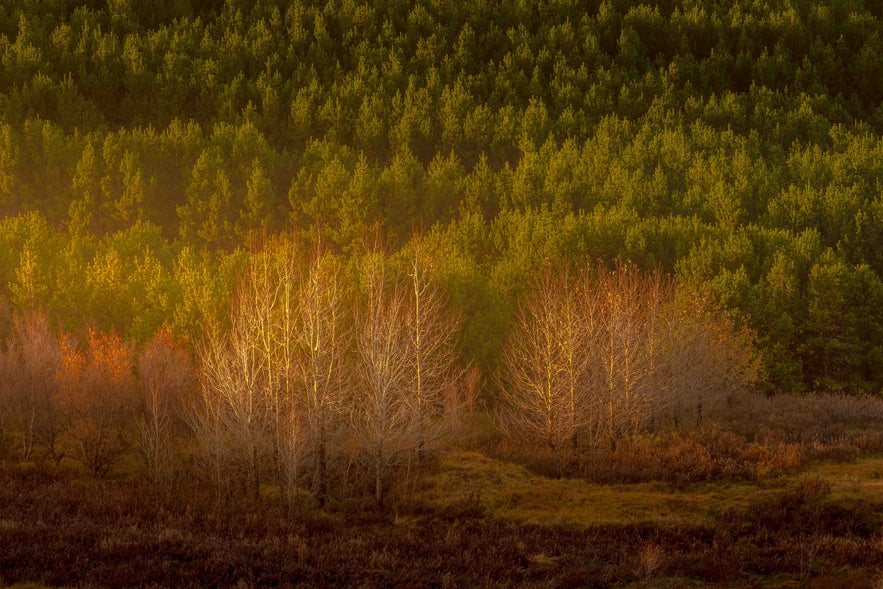
In spring the days start to get longer and the snow begins to melt. This creates what I would call a transition period here where the landscape begins to emerge in many shades of brown and hiking can prove to be a bit of a soggy affair. You don’t have to wait too long though before the flowers and trees suddenly bloom and we get fields of lupine that paint the landscape purple!
I hope this post has been useful to those of you planning on visiting and who want to make the most of the incredible light conditions we have here. As a photographer living in Iceland I know I am very lucky to have almost never-ending Golden Hour that lasts for over 7 hours on some days. If you are a photographer who has ever felt rushed chasing light, come visit us in Iceland and spend a day (or night) taking your time in our all day and all night Golden Hours!
You can visit more of articles here on Guide to Iceland or on my website. No pictures in this article are to be used or reproduced without my permission.
Are you a photographer that has visited Iceland? Have you got any tip yourself? Share your thoughts and even photos beneath!

